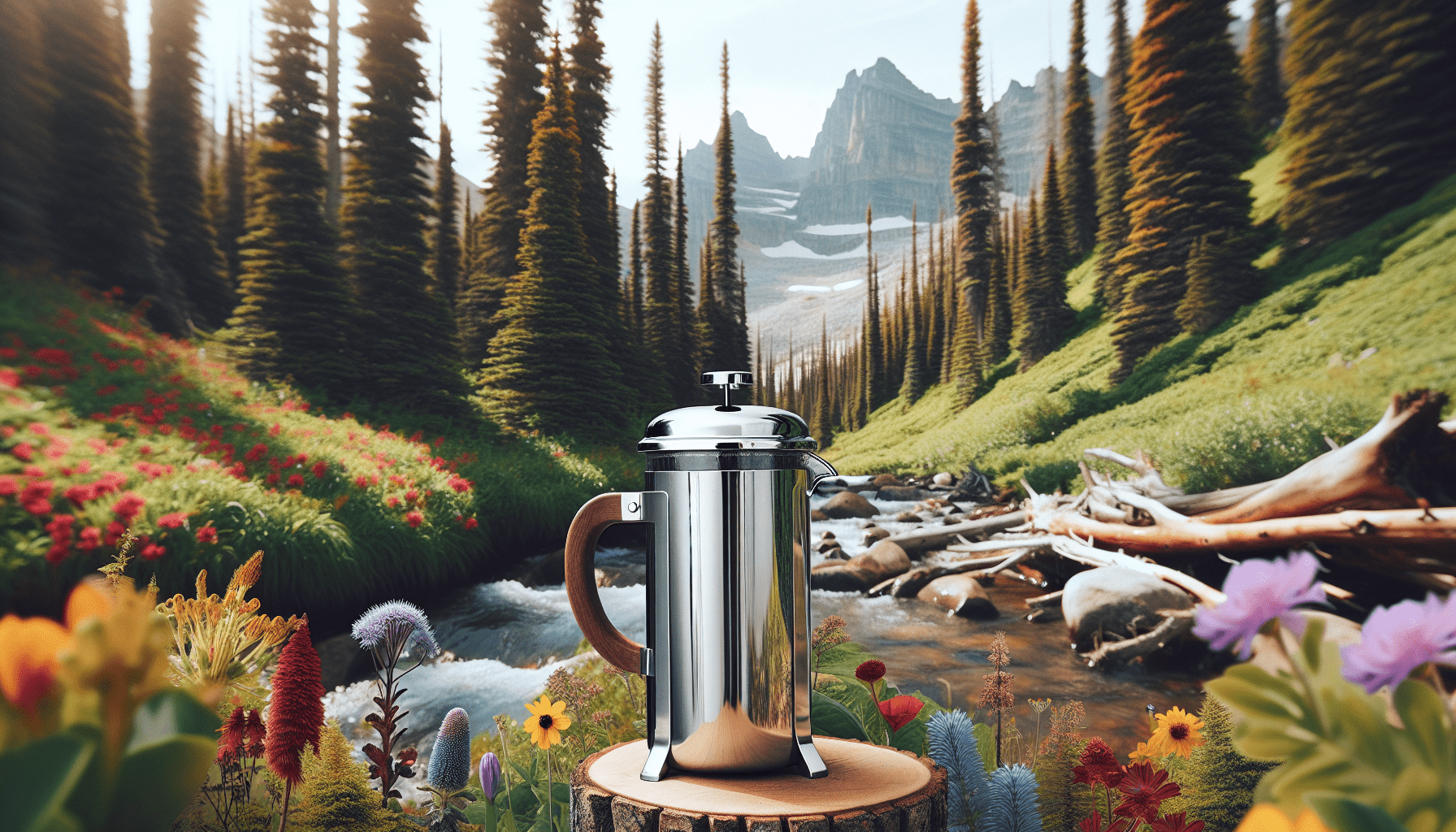Are you wondering how to clean your coffee maker? Look no further! In this article, we will provide you with simple and effective tips on how to keep your coffee maker sparkling clean and maintain the quality of your daily brew. Whether you have a traditional drip coffee maker or a fancy espresso machine, we’ve got you covered. Say goodbye to buildup and hello to a fresh and delicious cup of coffee every time!
Materials Needed
To clean your coffee maker, you will need the following materials:
Vinegar
Vinegar is an effective cleaning agent that can help remove mineral buildup in your coffee maker.
Water
Water is essential for rinsing the various components of your coffee maker after cleaning.
Soap
Soap can be used to clean the exterior of your coffee maker, especially for stubborn stains.
Brush
A brush, such as a small cleaning brush or toothbrush, is useful for scrubbing hard-to-reach areas of your coffee maker.
Cloth
A soft cloth or sponge is ideal for wiping down the exterior and drying the various components of your coffee maker.
Preparation
Before starting the cleaning process, it’s important to take a few preparation steps:
Read the manufacturer’s cleaning instructions
The first step in cleaning your coffee maker is to refer to the manufacturer’s cleaning instructions. This will provide specific guidance for your particular model and ensure that you follow the correct cleaning procedures.
Gather all the materials
Collect all the materials needed for cleaning, including vinegar, water, soap, brush, and cloth. Having everything ready will make the cleaning process more efficient.
Remove any coffee grounds or filters
Before beginning the cleaning process, make sure to remove any leftover coffee grounds or filters from the coffee maker. Discard the used coffee grounds and filters in an appropriate manner.
Disconnect the coffee maker from the power source
For safety reasons, ensure that your coffee maker is unplugged or disconnected from the power source before starting the cleaning process. This will minimize the risk of electric shock or other accidents.
Cleaning the Exterior
Cleaning the exterior of your coffee maker helps to keep it looking clean and presentable. Follow these steps:
Wipe down the exterior with a damp cloth
Start by wiping down the exterior surfaces of the coffee maker with a damp cloth. This will remove any dust, dirt, or residue that may have accumulated.
Use soap and water for stubborn stains
If there are stubborn stains on the exterior of your coffee maker, mix some soap with water and use a sponge or cloth to gently scrub the affected areas. Rinse with clean water and dry thoroughly.
Dry the exterior properly
After cleaning, make sure to dry the exterior of your coffee maker using a soft cloth. This will help prevent water spots or streaks from forming and keep your coffee maker looking its best.
Cleaning the Water Reservoir
The water reservoir of your coffee maker can accumulate mineral deposits over time. Cleaning the water reservoir helps to maintain the quality of your brewed coffee. Here’s how to do it:
Empty out any remaining water
Before cleaning the water reservoir, make sure to empty out any remaining water. Discard the water properly.
Add a mixture of vinegar and water to the reservoir
Prepare a mixture of equal parts vinegar and water. Pour this mixture into the water reservoir of your coffee maker. The vinegar acts as a natural descaler and helps remove mineral buildup.
Run a brew cycle with the vinegar solution
Start a brew cycle with the vinegar solution in the water reservoir. Let the coffee maker complete the brewing process. The vinegar solution will circulate through the internal components, helping to remove any mineral deposits.
Run multiple cycles with fresh water to rinse the reservoir
After running the brew cycle with vinegar, rinse the water reservoir by running multiple cycles with fresh water. This will help remove any residual vinegar taste and ensure that the water reservoir is thoroughly cleaned.
Cleaning the Coffee Pot
The coffee pot or carafe of your coffee maker can become stained and accumulate coffee residue over time. Cleaning the coffee pot ensures that your brewed coffee tastes fresh and remains visually appealing. Here’s how to do it:
Empty out any leftover coffee
Before cleaning the coffee pot, empty out any leftover coffee. Discard the coffee grounds properly.
Remove the coffee pot lid and filter basket
Take off the coffee pot lid and remove the filter basket if your coffee maker has one. This will allow for easier cleaning of these components.
Wash the lid and filter basket with soap and water
Use soap and water to wash the coffee pot lid and filter basket. Gently scrub any stains or residue, then rinse thoroughly with clean water.
Use a brush to clean the pot interior
For the interior of the coffee pot, use a brush or sponge to scrub away any stubborn coffee stains. Pay attention to the bottom and sides of the pot where residue can build up.
Rinse all components thoroughly
After cleaning, make sure to rinse all the components of the coffee pot, including the lid, filter basket, and interior, with clean water. This removes any soap residue and ensures that your brewed coffee won’t have a soapy taste.
Cleaning the Internal Components
To ensure that your coffee maker is in optimal working condition, it’s important to clean its internal components. Follow these steps:
Refer to the manufacturer’s instructions
Refer to the manufacturer’s instructions for cleaning the internal components of your specific coffee maker. These instructions may vary depending on the model and design of your coffee maker.
Use a brush to clean the coffee maker’s internal parts
Using a brush, carefully clean the internal parts of your coffee maker according to the manufacturer’s instructions. Pay attention to any areas where coffee grounds may have built up.
Pay attention to coffee grounds build-up
Coffee grounds can accumulate in various parts of your coffee maker, such as the brewing chamber or the filter assembly. Make sure to remove any visible coffee grounds during the cleaning process.
Rinse all components properly
After cleaning the internal components, thoroughly rinse each component with clean water. This will remove any remaining cleaning solution and ensure that there are no residues left behind.
Descaling
Descaling is an important step in cleaning your coffee maker, as it helps remove mineral deposits that can affect the taste and performance of your brewed coffee. Here’s how to descale your coffee maker:
Fill the water reservoir with a descaling solution
Purchase a descaling solution specifically designed for coffee makers. Follow the instructions on the packaging to dilute the solution and fill the water reservoir of your coffee maker.
Run a brew cycle
Start a brew cycle with the descaling solution in the water reservoir. Allow the solution to circulate through the internal components of the coffee maker. Follow the manufacturer’s instructions regarding the duration of the brew cycle.
Flush the reservoir and the coffee pot with fresh water
After the brew cycle with the descaling solution, rinse the water reservoir and the coffee pot thoroughly with fresh water. Repeat this process a few times to ensure that all traces of the descaling solution are removed.
Cleaning the Filter
The filter of your coffee maker plays a crucial role in ensuring a smooth and flavorful cup of coffee. Here’s how to clean it:
Remove the filter from the coffee maker
Take out the filter from the coffee maker. Depending on the type of coffee maker you have, this may involve removing a disposable paper filter or rinsing a reusable filter.
Dispose of used filters properly
If you’re using disposable paper filters, discard them in an appropriate manner. Compostable filters can be added to your compost, while non-compostable filters should be disposed of in the trash.
Wash the filter basket with soap and water
For reusable filters, wash the filter basket with soap and water. Gently scrub away any coffee residue, then rinse thoroughly. Make sure the filter basket is completely free of soap before using it again.
Allow the filter basket to dry completely
After cleaning, allow the filter basket to air dry completely before reassembling it with the coffee maker. This helps prevent any moisture from collecting and potentially causing mold or mildew.
Regular Maintenance
To keep your coffee maker in top condition, regular maintenance is essential. Follow these tips:
Clean the coffee maker on a regular basis
Make it a habit to clean your coffee maker regularly, ideally after every use or at least once a month. Regular cleaning prevents the buildup of coffee residue and mineral deposits, ensuring that your coffee maker continues to function optimally.
Clean the filter and filter basket after each use
After brewing coffee, remove the filter and filter basket and clean them with soap and water. This prevents the accumulation of coffee grounds and residue, which can affect the flavor of future coffee batches.
Descale the coffee maker periodically
In addition to regular cleaning, descale your coffee maker periodically to remove mineral buildup. The frequency of descaling depends on the hardness of your water. Consult the manufacturer’s instructions or descaling solution packaging for recommended descaling intervals.
Final Tips
Here are some additional tips to keep in mind when cleaning your coffee maker:
Consult the manufacturer’s manual for specific cleaning instructions
Every coffee maker is unique, so it’s important to consult the manufacturer’s manual for any specific cleaning instructions or recommendations. This will ensure that you clean your coffee maker correctly and avoid any potential damage.
Be cautious with fragile parts
Some parts of your coffee maker, such as the glass coffee pot or delicate plastic components, may be more fragile. Handle these parts with care during the cleaning process to avoid any accidental damage.
Do not immerse the coffee maker in water
Avoid immersing your coffee maker in water, as this can damage electrical components and create safety hazards. Stick to cleaning the removable parts and wiping down the exterior surface.
Ensure all components are completely dry before reassembling
Before reassembling your coffee maker, make sure that all the components are completely dry. Moisture can lead to mold or mildew growth and affect the performance of your coffee maker.




